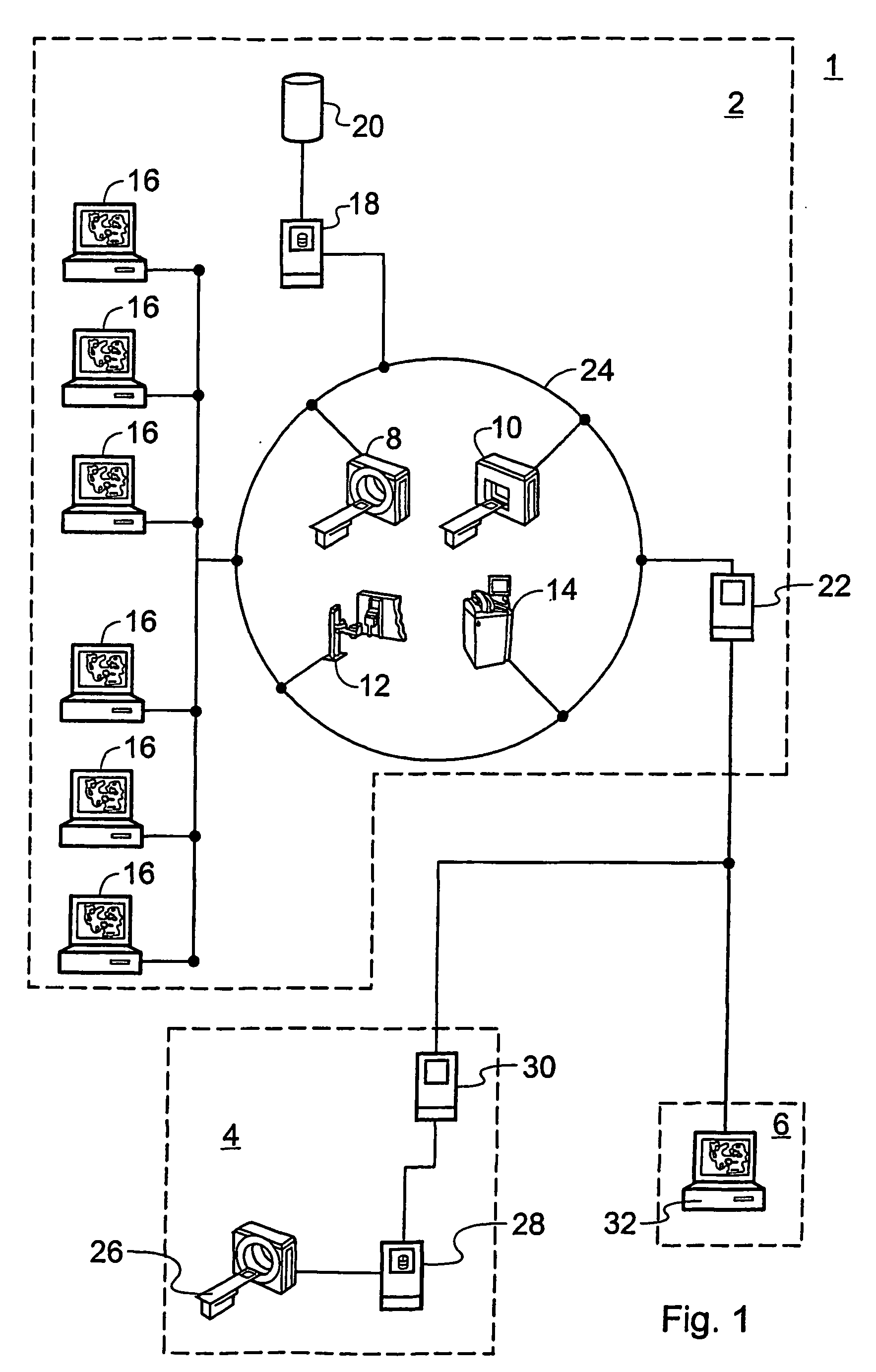Handling of image data created by manipulation of image data sets
a technology of image data and manipulation, applied in the field of image manipulation, can solve the problems of general-purpose file transfer not being an expected or standardised feature of diagnostic devices and associated networks, and the general-purpose file transfer is generally incapable of being supported by hospital networks, so as to improve the functionality of image manipulation softwar
- Summary
- Abstract
- Description
- Claims
- Application Information
AI Technical Summary
Benefits of technology
Problems solved by technology
Method used
Image
Examples
Embodiment Construction
[0055] Embodiments of the present invention will be described hereinafter and in the context of a computer-implemented system, method and computer program product. Although some of the present embodiments are described in terms of a computer program product that causes a computer, for example a personal computer or other form of workstation, to provide the functionality required of some embodiments of the invention, it will be appreciated from the following description that this relates to only one example of some embodiments of the present invention. For example, in some embodiments of the invention, a network of computers, rather than a stand-alone computer, may implement the embodiments of the invention. Alternatively, or in addition, at least some of the functionality of the invention may be implemented by means of special purpose hardware, for example in the form of special purpose integrated circuits (e.g., Application Specific Integrated Circuits (ASICs)).
[0056]FIG. 1 is a s...
PUM
 Login to View More
Login to View More Abstract
Description
Claims
Application Information
 Login to View More
Login to View More - R&D
- Intellectual Property
- Life Sciences
- Materials
- Tech Scout
- Unparalleled Data Quality
- Higher Quality Content
- 60% Fewer Hallucinations
Browse by: Latest US Patents, China's latest patents, Technical Efficacy Thesaurus, Application Domain, Technology Topic, Popular Technical Reports.
© 2025 PatSnap. All rights reserved.Legal|Privacy policy|Modern Slavery Act Transparency Statement|Sitemap|About US| Contact US: help@patsnap.com



